The US generated 292.4 million tons of municipal solid waste (MSW) in 2018 alone, which equates to around 4.9 pounds per person per day. This, at a time when there are increasing calls for waste-reduction strategies and a more sustainable economy.
Left unchecked, this level of waste production will continue to have negative environmental, social, and financial impacts, which is why sustainable waste management is so important. However, without a clear view of what sustainable waste management actually means, it is very hard to set a path towards it. In an attempt to clarify this situation with actionable and verifiable goals, one of the founders of LEED, Rob Watson, has developed the SWEEP certification.
However, before we look at how SWEEP intends to help improve the solid waste management process, it’s important to have an idea of how that process works.
The Current Waste Management Process
The current waste management process has changed little over the past few decades, and can, essentially, be broken down into three main steps:
1. Waste is collected from homes and businesses in small trucks designed to navigate towns and cities. This is done by local governement trucks or private service providers.
2. While waste can sometimes be transported directly to its final destination, more often it is transported to a Transfer Station. Here, waste is aggregated before being sent to its final destination using larger forms of transport such aslarge trucks, trains and barges.
3. The final destination of this solid waste will generally be:

The system as it stands is clearly inefficient when it comes to waste reduction and recovery, with the USA having a municipal solid waste (MSW) recycling rate as low as 35%. Even then, recycling can only help so much, with many champions of sustainable waste management now pushing for a reduction in waste rather than simply focussing on post-collection recovery.
However, up until now, a major hurdle to creating a better waste management process has been the lack of a standardized definition or set of principles for sustainable waste management, which is where the SWEEP certification comes in.

Source: rts.com
What is SWEEP Certification?
SWEEP is a US-based voluntary environmental performance standard for municipal waste programs and the service providers who support these programs. The organizations stated vision is: “A world without waste where materials are valued and continually utilized for their highest and best purpose, without causing harm to human health and the environment.”
The values behind this vision are, in essence, that of a circular economy, which moves away from the “take-make-consume-throw away” economic pattern that the current waste management system caters for. Instead, a circular economy looks towards an approach that keeps materials in the loop for as long as possible, and local waste management systems must start catering for this shift.
With this vision in mind, SWEEP has created 5 performance credit categories, which each address a different part of the waste management process. These are:
1. Sustainable Materials Management Policy
This category focuses on the “before” of waste management, helping local governments and businesses establish intent and set goals for their waste management systems. The credits in this category, according to SWEEP, help to promote policies that protect the environment, public health, and economics.
2. Waste Generation & Prevention
The second category is mainly concerned with monitoring, measuring, and tracking performance. This is a vital part of overhauling the waste management process since it gives local governments and private service providers the opportunity to make data-driven decisions about their waste management procedures.
Having this data will help to encourage source reduction and reuse of materials, as entities can see where the inefficiencies and excess waste are occurring. It is at this stage that modern waste management and tracking systems set local municipalities and companies apart.
3. Solid Waste Collection
This deals with everything between steps one and three in the Current Waste Management Process outlined above. The SWEEP protocols look at how waste is consolidated and transported, as well as the safety of the workers within those waste systems.
Furthermore, the criteria will consider fuel economy and other efficiencies that may help to minimize resource expenditure in the solid waste collection systems themselves.
4. Post Collection Recovery
Here, SWEEP certification deals with how local government and private service providers can maximize the amount of material recovery after the solid waste has been collected. This mainly focuses on landfill diversion, which is the last resort when it comes to sustainable waste management.
5. Post Collection Disposal
Finally, there are criteria for the safe and effective disposal of waste that can’t be recovered, processed, or used in some other way. This is the last resort, and as such SWEEP does not reward participants for disposal. However, it does incentivize best management practices.
RTS and SWEEP Certification
RTS has officially become a member of SWEEP and our partnership with the organization is helping to push forward our shared goals. Thanks to RTS’ experience and expertise within the industry, we will work with SWEEP to refine and develop their Sustainable Performance Standards.
As part this initiative, David Segall, VP of Public Policy and Municipalities at RTS, has joined as a member of the Steering Committee, recently delivering a webinar with SWEEP Committee Members to discuss what happens to our recyclables once they reach the MRF, the current state of the recycling commodities market, and solutions that can help push the industry forward.
For more information on SWEEP, and how RTS is increasing transparency and efficiency in the waste management sector, read the blog here or contact us today.
For more information on SWEEP, and how RTS is increasing transparency and efficiency in the waste management sector, read the blog here or contact us today.

